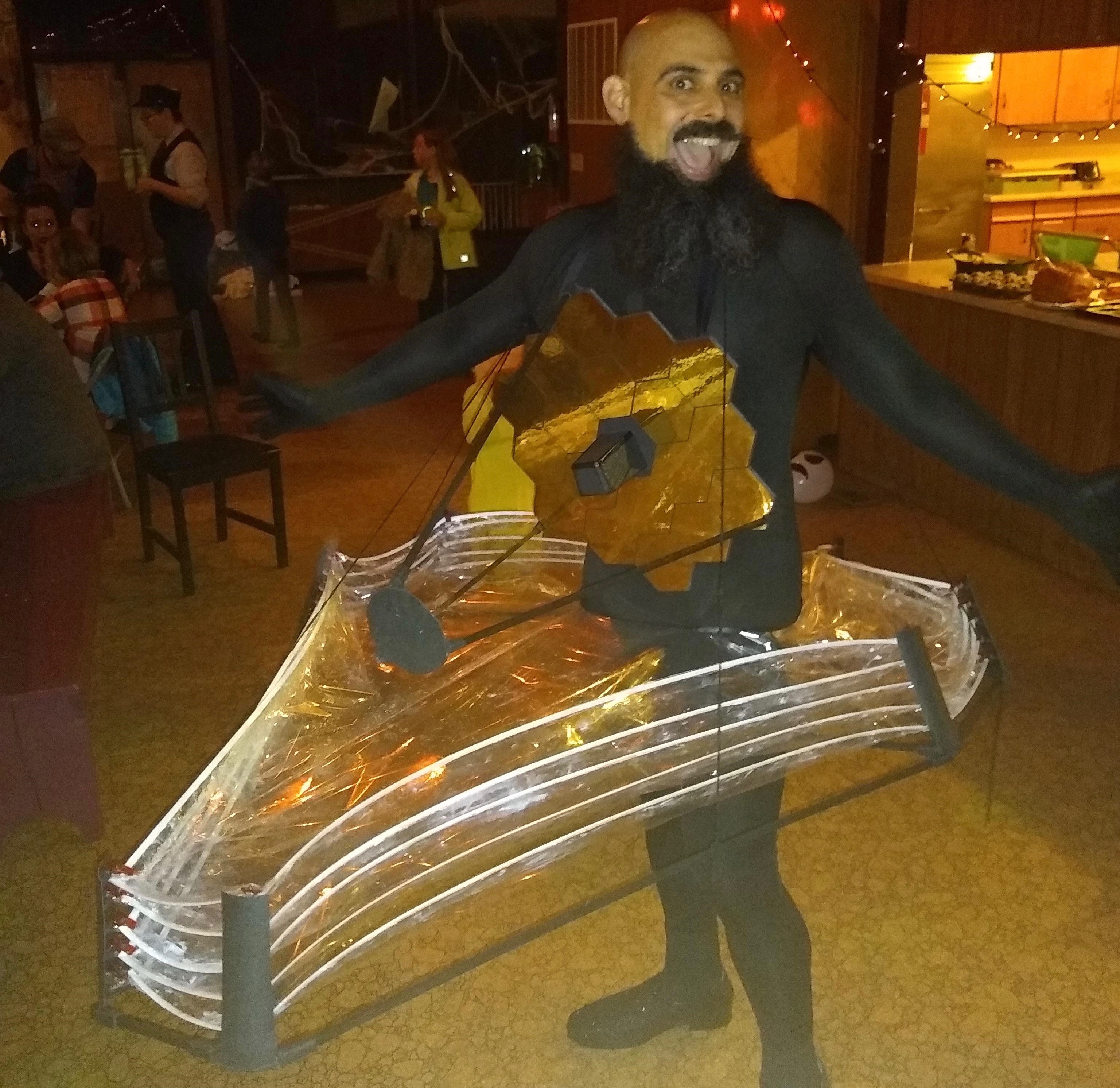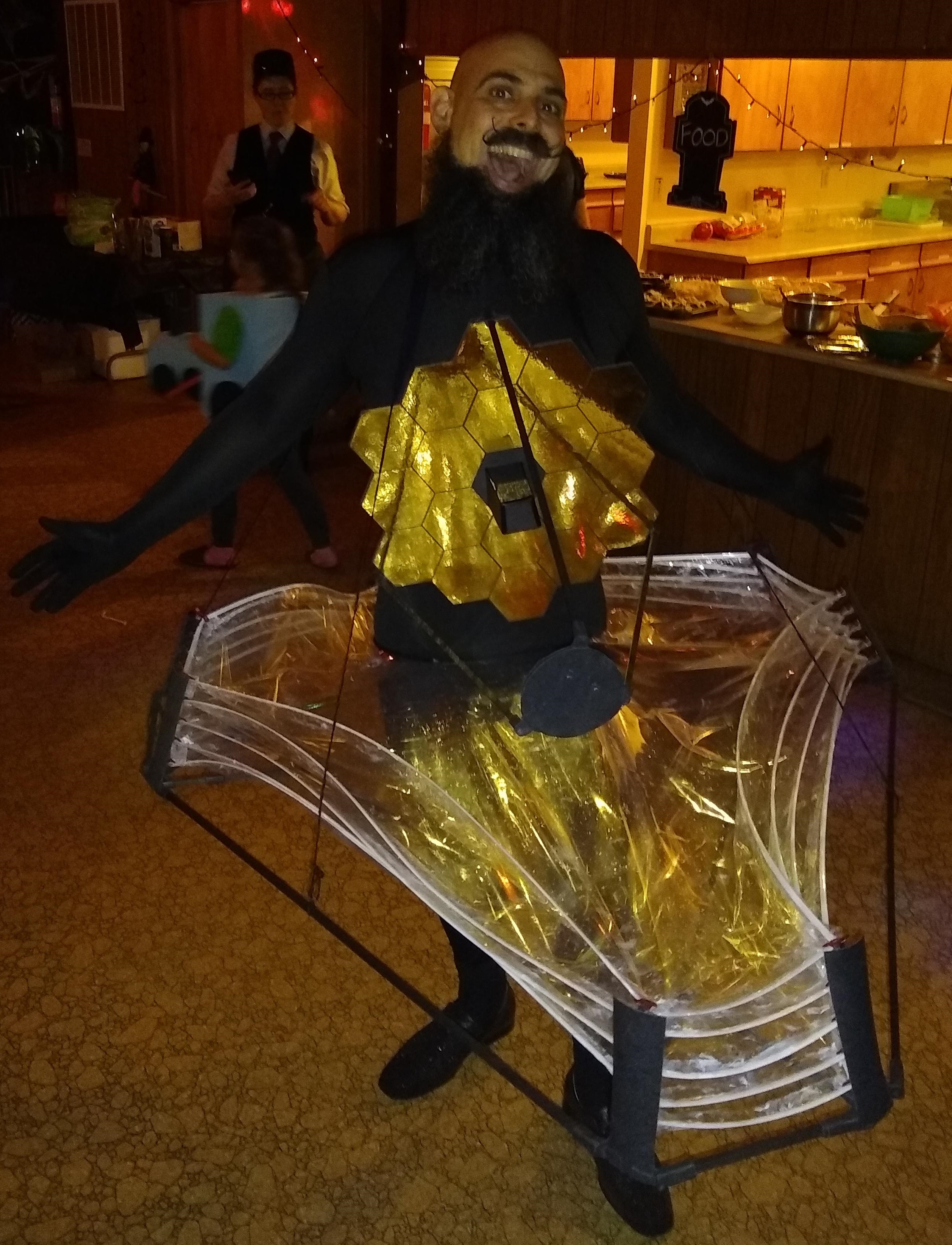
The bar for space-y Halloween costumes has just been raised, way up into intergalactic space.
Theoretical astrophysicist and author Ethan Siegel, who started the astronomy blog Starts With a Bang!, has created a wearable version of NASA's upcoming James Webb Space Telescope that's nearly as complicated as the $8.9 billion instrument itself.
Siegel described the costume as a "love letter" to NASA astrophysics and Webb, the successor to the iconic Hubble Space Telescope that's scheduled to launch in May 2021. [Boo! NASA JPL's 2018 Space Pumpkin Carving Contest in Photos]
"I absolutely love space telescopes," he told Space.com. "Hubble has revolutionized the world, and the James Webb Space Telescope is going to be that next giant leap."
The infrared-optimized James Webb Space Telescope sports a primary mirror 21 feet (6.5 meters) across, nearly three times wider than that of Hubble. The powerful new observatory will conduct a variety of groundbreaking observations once it's aloft — hunting for potential biosignature gases in the atmospheres of nearby exoplanets, for example, and peering across immense distances to study the universe's first stars and galaxies.

Siegel made his stunning simulacrum using a variety of materials, including Styrofoam poster board, superglue, gold vinyl, painted dowels and Worbla thermoplastic. The entire project, from the planning stages through to completion, took between 60 and 80 hours, he said.
Such effort was not unprecedented for Siegel — "I costume profusely," he said — but the subject matter was. His previous Halloween costumes have generally focused on pop-culture figures, especially those that played an important role in his youth. For example, he has dressed up as Elsa from "Frozen," pro wrestler Randy "Macho Man" Savage, Zangief from the "Street Fighter" video-game series and Lion-O from the old "Thundercats" cartoon, Siegel said.
Get the Space.com Newsletter
Breaking space news, the latest updates on rocket launches, skywatching events and more!
The most laborious component of the Webb costume, he added, was the sunshield, which is designed to help keep the telescope cold enough to make its superprecise infrared observations. The real Webb's sunshield will launch in a highly compact configuration but unfurl in space to cover as much area as a tennis court.
Siegel found himself confronting the same basic problem that the actual sunshield's designers did: How do you build something that's both lightweight and sturdy? Siegel found a way using cellophane sheets, corset boning, sewing clips, wooden dowels and Worbla.
And he didn't just think his way to this solution — there was a lot of trial and error involved.
"Engineering is very different than theoretical physics," Siegel said.
Editor's note: If you've got a great space-related Halloween costume you'd like to to share with Space.com for a story or gallery, send images and comments to managing editor Tariq Malik at spacephotos@space.com.
Mike Wall's book about the search for alien life, "Out There," will be published on Nov. 13 by Grand Central Publishing. Follow him on Twitter @michaeldwall. Follow us @Spacedotcom or Facebook. Originally published on Space.com.
Join our Space Forums to keep talking space on the latest missions, night sky and more! And if you have a news tip, correction or comment, let us know at: community@space.com.

Michael Wall is a Senior Space Writer with Space.com and joined the team in 2010. He primarily covers exoplanets, spaceflight and military space, but has been known to dabble in the space art beat. His book about the search for alien life, "Out There," was published on Nov. 13, 2018. Before becoming a science writer, Michael worked as a herpetologist and wildlife biologist. He has a Ph.D. in evolutionary biology from the University of Sydney, Australia, a bachelor's degree from the University of Arizona, and a graduate certificate in science writing from the University of California, Santa Cruz. To find out what his latest project is, you can follow Michael on Twitter.









